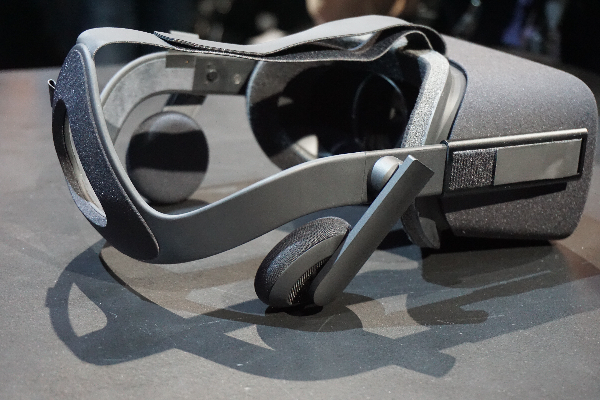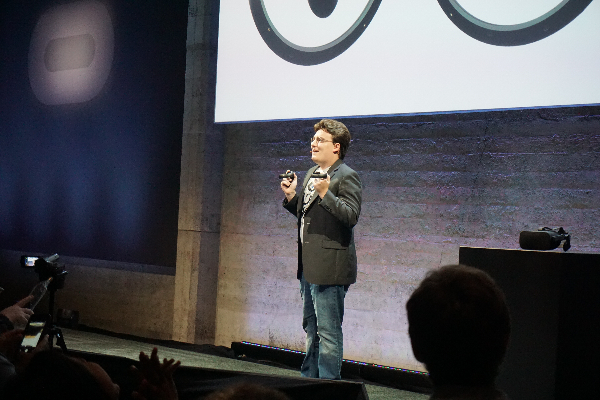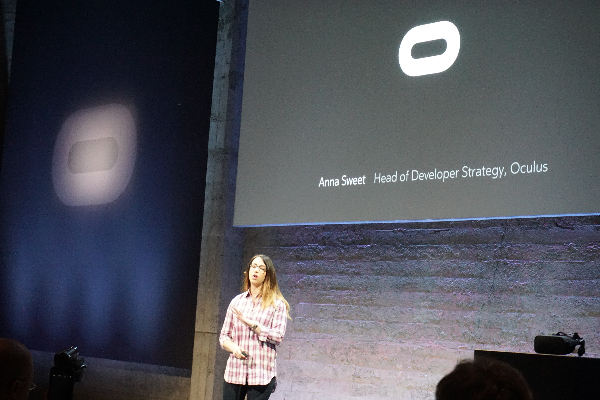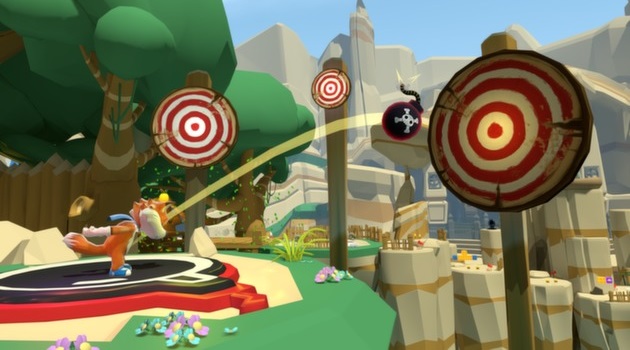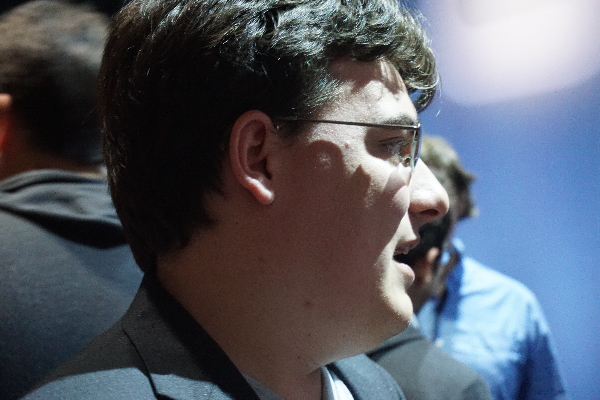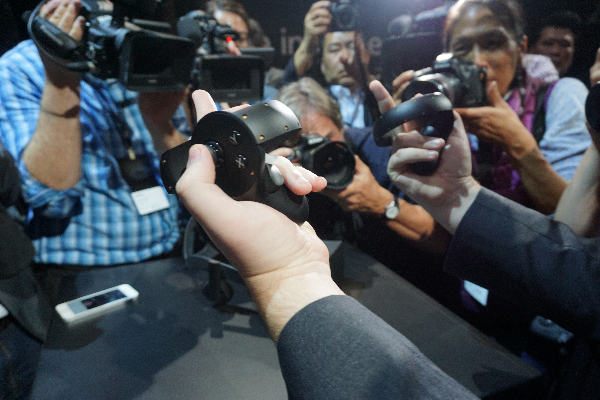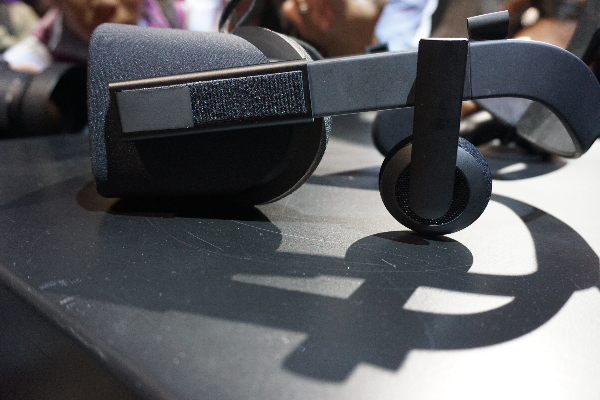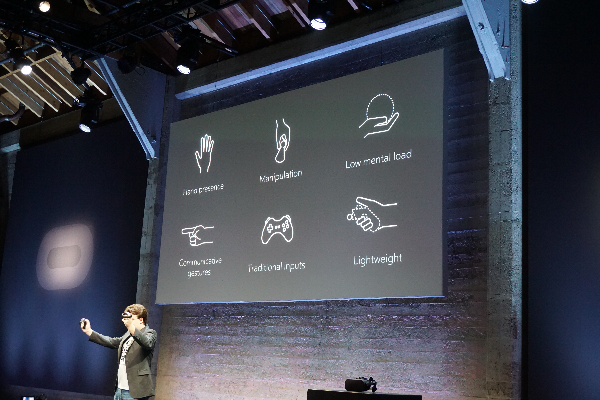The Great Oculus Rift Hype Machine, Continued
When the Oculus Rift finally ships, after nearly three years of manipulated anticipation and "hurry up and take my money" buyer frustration, it is going to blow your ever-loving mind. The additional industrial design touches Oculus' put on the final headset hardware, the use of XBox One controllers, and the where-did-this-come-from Oculus Touch (the company's new sneaky-obvious wristwear controllers), will all only add to the allure.
Oculus has never shied away from explaining that it has taken this long because the company wanted to get it right -- apparently down to the fabric on the headset.
I have watched the Oculus crescendo, practically from the beginning, experiencing the many demonstrations along the way, and I'm not going to hide it: I am in the tank for VR and for any company that will accelerate the adoption of VR, and for now one of those companies is undoubtedly Oculus.
My disclosures: None. My benefits are the same as yours, as a fan of technology advancement, as someone anxious to be surprised by the next big thing, as someone skeptical about almost anything pretending to be that. But I am not at all skeptical about this.
(Wait. Scratch that. I got a coffee mug and a t-shirt at the grand unveiling on Thursday.)
I have pushed Tom's Hardware editors and myself to -- is there a more apt word for it? -- immerse ourselves in this technology because I believe it is, literally, a game changer in every sense. It will change the way games are conceived and played, the way we are entertained (and sure, read further into that as well, if it suits you), and the way interactive experiences and other human-oriented applications evolve.
I have tried every demo at every opportunity, as have many of our team. One of our editors bought DK2. We have Gear VR. We have tried Microsoft Hololens, HTC/Valve Vive. We will try them again. These things don't get old.
Get Tom's Hardware's best news and in-depth reviews, straight to your inbox.
In short, I cannot wait. But that's just the problem. In less than nine months, the Oculus Rift will ship. That's still almost a year away, which is ages in tech time.
Beyond that, the hardware requirements to fuel the Oculus Rift are beyond the reach of too many. The typical consumer doesn't build PCs. Surely not even the majority of the Tom's Hardware crowd are packing the equivalent of an Intel Core i5 and an Nvidia GeForce GTX 970 and 8 GB of RAM.
Would you upgrade for high quality VR? Some undoubtedly will, others will wait, and still others probably should wait until there's more content. Despite all of the demonstrations we've seen, it is still hard to believe that enough content will be ready. Anna Sweet, head of development strategy for Oculus, announced on Thursday that Oculus is giving away $10 million to spur game development. On the one hand, that's a rounding error for Facebook, and on the other, it's also a cry for help -- Oculus needs content, and it needs it yesterday.
Games like CCP Games' EVE:Valkyrie, Playful's Lucky's Tale, and many others are fun, but the demonstrations have been mostly of prototype games, snippets meant to excite interest. I'm told there will be more at E3, including a much-enhanced Lucky's Tale, now one year past my first experience with it. Will people even play VR games for an hour or more? Will the big studios jump in, or leave the early work to independent studios?
Oculus CEO Brendan Iribe proclaimed on Thursday: "For the first time, we will finally be inside of the game. It will change everything. We've been dreaming of it. It's finally here." (If by "here" you mean next year.) The more sobering fact is that when it ships, there will still be far too much work to do.
If Thursday's presentation and discussions revealed anything, it's that high quality VR takes time. It takes attention to detail. Without that attention to detail, the Oculus Rift and the experiences it delivers would not stand out.
The Details Matter
With each incremental dribble of news, there's a sense that Oculus is watching and learning and perfecting the first product it will ship. Did you catch, for example, that Oculus CEO Palmer Luckey said he had watched thousands of people using the early development kits? I've seen him, excited as a 12-year-old, hurrying a guest off to see a demo. I've seen him watch their reaction. (Don't tell him I was watching him watching them.)
(At the event yesterday, he practically ran me over to put the Touch controllers on a pedestal so all of us taking pictures could also see and capture them, too. I suggested he act as our head and hand model, and he gladly obliged, with gun gestures and various angles, talking about the nuances of the controllers like Willy Wonka describing the inner workings of his chocolate river.)
Over the past couple of years, as each person tried on the headset over time, jostling it on their misshapen heads, squeezing the headset like an accordion to make the lenses closer together, moving it gingerly around the frames of their designer glasses, mouths open like mesmerized toddlers at the circus, sometimes puking or feeling nauseated, the Oculus team had apparently been taking notes. The company has accounted for and fixed each of these problems.
The attention to detail on the final Rift headset almost seems to steal a page from the Apple playbook. Executives talked on Thursday about the unit's "strap architecture" and even called it a "facial interface." (Mm, OK.)
But once we're past the theater of it, it's also important to understand that unless a company thinks this way, that something like the strap of a headset is so important as to have an "architecture," then perhaps it's not taking the details seriously enough. If you play video games for an hour or more at a time, then comfort matters. If you've tried the various VR demos, you'll know that these details are important, whatever fancy nomenclature Oculus invents.
Oculus said that the Rift, now covered in some sort of fabric (what, no thread count details? No zigzag stitch architecture mumbo jumbo? No hand-rubbed seamless contours?), is lightweight (I tried to find out exactly how lightweight, but unfortunately I don't keep a portable scale on me), doesn't pull on your face, doesn't move around, it goes on like the old familiar ballcap, it fits around glasses with ease, it adjusts to each of our ocular idiosyncrasies, and the company believes it achieved its primary goal of making it so that you don't even know it's there, that it "just disappears."
Apple: It just works. Oculus: It just disappears. Apple: It feels good in the hand. Oculus: "It feels great when you put it on."
Get it?
Not a stone is being left unturned. The Rift has an unmatched field of view and visual resolution. AMD and Nvidia have created new rendering schemes and exposed GPU functions for VR developers. And so on. But Oculus recognizes that there's still more work to do. Iribe, talking about some of the visual achievements accomplished so far, also indicated that the resolution wasn't as high as it will be one day.
The new and final Sensor, which wirelessly syncs with the headset, is small and includes a constellation tracker for precise head tracking. Oculus didn't leave audio to chance either, promising that the latency needs to be nonexistent here, as well -- "Rift tricks your eyes, but it tricks your ears, too," Iribe said.
What of those images leaked from the Oculus website, the one that had a camera in the front of the headset? It was an old design concept. Oculus decided that the camera might overwhelm the processors with too much information right now.
The Xbox One controller came after what Oculus product VP Nate Mitchell described as years of work on the company's own controller. Those prototypes eventually became the Touch controller, Mitchell told me. Balance and ergonomics on a controller was difficult, Mitchell said, again pointing to the level of detail Oculus seems to put into everything it has created.
Iribe echoed those thoughts, pointing to how Sony "showed a consumer design earlier than anyone else, and yet they're really taking their time to get it right."
Iribe also said that both the Touch controllers and the final headset design came from the company's acquisition of the Carbon Design team last year -- that's the team, he said, that created the Xbox 360 controllers and various keyboards and mice for Microsoft. Iribe said that Oculus is a team of mostly hardware and software engineers, so the company saw fit to bring in the experts to get the industrial design right.
I tried to do a little social engineering on Oculus execs to ascertain how it worked. For instance, it's wireless -- what kind? Not saying. What does it connect to, the PC or the tracking system? Not saying. What sensors are being used? Not saying. How is latency being managed if it's wireless? Good question, more details will emerge on this, possibly even at E3. (And can it check my heart rate? My sobriety? Or remind me to check on the kids?)
Half Moon, the prototype name for the Touch, will be out in the first half of 2016, which is to say after Rift ships. It provides high precision, low latency, and six degrees of finger tracking. It uses inertial measurement to do all of that tracking, and the intent is to allow precise manipulation of virtual objects as you would in real life. But it also includes traditional inputs such as buttons, a trigger, and an analog stick, and there is haptic feedback, as well.
Mitchell did say that the controllers use the same kind of constellation tracking as the Sensor and pointed out the IR LEDs on the rings, and he indicated that more details about Touch would emerge in time. We'll have a chance to try it out at E3.
Amid even more wordplay about things like "hand presence," and "low mental load," there's yet another message in here. While Oculus tried to create a controller, they decided not to reinvent the same old thing, instead inventing something entirely new that made sense with the Rift -- something that they could control as part of the entire system and ensure that it kept to its low latency demands.
Remember that head tracking, audio synchronicity and hand tracking must be precise to feel real. Oculus' vision of VR is very much focused on the "R" part, and three years of engineering work is driven precisely by that. When Iribe talked about mobile, console and PC VR, he emphasized that PC VR, in the form of the Rift, is where you fully believe that you're "there," with a full sense of presence, because of the high fidelity the PC can muster.
In a land o' leaks, this was truly the first we had heard of Touch. In addition to the hardware, Luckey talked about the Toybox, a sandbox where Oculus has created robots to control, garden gnomes to punch, and tetherballs to smack. Again, these should be ready for us to try out at E3.
Content
Above all, content is the final hurdle. Jason Rubin, the head of Oculus Studios, invited a few guests on stage, including the CEOs of CCP Games, Gunfire Games, and Insomniac. Once again, the content looked compelling, if brief. Rubin talked about some of what we'd see at E3, and he finally showed a list of developers working with Oculus.
It's an impressive list, but save for Square Enix, there's not a major game developer among them, and Rubin wouldn't say what the game developer was creating for the Rift. If this truly is the opportunity to re-create gaming, where are the big boys? Rubin insisted that "big studios will come and will play inside VR and they're extremely excited about it." He hinted that there would be much more prior to the official Rift launch next year.
I pushed further, asking what hurdles those developers saw, and he talked about how the independent developers started early and had a passion about VR from the get go. The bigger studios require more thought and more reasons to jump into VR, he said, and they are "not driven by the same immediate desire to fulfill the dream...of making worlds in VR."
When asked about the nascent nature of VR and the lack of an installed base, he countered that most of the developers realize that the learning curve for VR is steep, as it has been for other transitions in game development, and that those who "don't jump in early aren't fast followers, they're the ones who never catch up." In other words, the bigger players get it, and they know they must experiment, "even if an installed base isn't there on a spreadsheet."
Rubin did say that most studios typically have three-year plans for games, but he said he's encouraging them not to think that way, that so much is changing that three years is too long. (Yes, three years is too long. I think I've heard that somewhere before.)
Rubin said that most of the demonstrations and games we've seen so far are 15 minutes or less, and that this is a good way to figure out whether you have enough to make a full game out of the experience. He called 2014 the year of the demos, said 2015 will be about making what sells, and asserted that 2016 will be about making longer VR games.
Some day. Some day.
Meanwhile, I have the mug and the t-shirt.
Fritz Nelson is the Editor-In-Chief of Tom's Hardware. Follow him on Twitter, Facebook and Google+. Follow Tom's Hardware on Twitter, Facebook and Google+.
-
alchemy69 How about we stick to reporting tech news and leave the op-ed pieces and the pretensions of journalism to the Washington Post.Reply -
rhysiam Thanks for the article, I really enjoyed it.Reply
Unlike many news posts reporting on monitors/storage/CPU/GPU, the "tech specs" are such a tiny part for Oculus and other VR tech... There's so much more to the story. Personally, I thought the article shared both the author's excitement and concern for the ever-approaching VR launch.
If done right, VR is a potential game changer. I've been gaming in more or less the same ways for 20 years... VR just might change that. It's the personal, subjective experience of VR that has to win people over and I think it's warranted for some of the reporting surrounding it to adopt a different tone. -
eklipz330 with the amount of investment the industry is placing, it's hard to imagine this failingReply -
dstarr3 Replywith the amount of investment the industry is placing, it's hard to imagine this failing
Well, 3D TVs tanked even though all the manufacturers were throwing all their money at it. And the reason they failed is because people just don't want to wear bulky shit on their face to watch TV. I'm really excited for this, but this is just another example of people needing to wear a bulky thing on their face. Hopefully gamers don't mind, hopefully this offers a much better experience over traditional gaming than 3D TVs offered over traditional television. Because I want this to be awesome. But, there is the chance that this just turns out to be an extremely niche kind of device. -
kyle382 "Rubin did say that most studios typically have three-year plans for games, but he said he's encouraging them not to think that way, that so much is changing that three years is too long. (Yes, three years is too long. I think I've heard that somewhere before)"Reply
haha love it. My jimmies are so rustled right now. -
Oldbutstillatit After about a year of playing PC games on a DK2, I can say I'm just as excited as the day I ordered it for VR. Looking forward to the future of VR.Reply -
endeavour37a Well whether one thinks all of this is BS or very cool is sort of missing the point I think. Look at Oculus as the bulky camera in the late 1800's, they sure got better and we all have one now in one form or another. It is the next logical step not only in entertainment but, limited only by the immigration I guess.Reply
One day instead of strapping something on to create an environment we will be simply stepping into one, total immersion. This thing is just the first baby steps in that direction perhaps. Perhaps the age of screens has yet to reach the beginning of the end of it's usefulness, but maybe this is the end of the beginning in that direction to find a new way to experience and use our scenes and bodies in extraordinary ways. -
Little Lost Linden I puke on the Oculus Ralph. Does it come with a strap architecture that will hold a small plastic bag to store all of the puke that comes out of our mouths as we get sick from using it for more than 60 minutes? Are the bags disposable or will we have to use the same one over and over? Will the puke bad be washing machine safe? These any so many other questions will need to be answered soon, hopefully at e3.Reply
